- News
- Reviews
- Bikes
- Accessories
- Accessories - misc
- Computer mounts
- Bags
- Bar ends
- Bike bags & cases
- Bottle cages
- Bottles
- Cameras
- Car racks
- Child seats
- Computers
- Glasses
- GPS units
- Helmets
- Lights - front
- Lights - rear
- Lights - sets
- Locks
- Mirrors
- Mudguards
- Racks
- Pumps & CO2 inflators
- Puncture kits
- Reflectives
- Smart watches
- Stands and racks
- Trailers
- Clothing
- Components
- Bar tape & grips
- Bottom brackets
- Brake & gear cables
- Brake & STI levers
- Brake pads & spares
- Brakes
- Cassettes & freewheels
- Chains
- Chainsets & chainrings
- Derailleurs - front
- Derailleurs - rear
- Forks
- Gear levers & shifters
- Groupsets
- Handlebars & extensions
- Headsets
- Hubs
- Inner tubes
- Pedals
- Quick releases & skewers
- Saddles
- Seatposts
- Stems
- Wheels
- Tyres
- Health, fitness and nutrition
- Tools and workshop
- Miscellaneous
- Tubeless valves
- Buyers Guides
- Features
- Forum
- Recommends
- Podcast
review
£1,000.00
VERDICT:
Solid, good value road bike that'll see you right for everything from commuting to all-day sportives.
Weight:
9,100g
Contact:
www.trekbikes.com
At road.cc every product is thoroughly tested for as long as it takes to get a proper insight into how well it works. Our reviewers are experienced cyclists that we trust to be objective. While we strive to ensure that opinions expressed are backed up by facts, reviews are by their nature an informed opinion, not a definitive verdict. We don't intentionally try to break anything (except locks) but we do try to look for weak points in any design. The overall score is not just an average of the other scores: it reflects both a product's function and value – with value determined by how a product compares with items of similar spec, quality, and price.
What the road.cc scores meanGood scores are more common than bad, because fortunately good products are more common than bad.
- Exceptional
- Excellent
- Very Good
- Good
- Quite good
- Average
- Not so good
- Poor
- Bad
- Appalling
Trek's Madone 2.1 is a solid, dependable £1,000 road bike that can turn its hand to everything from commuting to sportives. You'd be hard pressed to point out any particular aspect of this bike that's stunning, but it's remarkably consistent across the board.
Trek introduced the Madone several years ago, named after the climb outside Nice where He-Who-Must-Not-Be-Named used to gauge how his training was going. You know the bloke. Texan. Watches a lot of daytime TV these days.
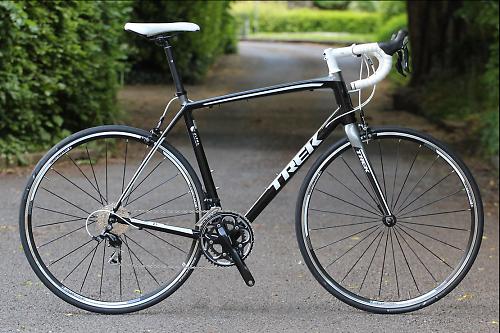
Madones have changed lots over the years and there are loads of different variants in the current line up. This is the first model year that Trek have offered the Madone with an aluminium frame; it has been wall-to-wall carbon fibre up until now (they've introduced aluminium Domanes for the first time too). The 2 Series models are made from Trek's 200 Series Alpha Aluminium, and some of the top-end features have had to be sacrificed.
Frame: Carbon Madone's kissing cousin from Bauxite County
For example, Trek make a big noise about their KVF tube shaping, KVF standing for Kammtail Virtual Foil. Essentially, they've designed a deep, aerodynamically efficient tube profile and chopped off the trailing edge to reduce weight and improve handling while retaining the aero performance.
Trek make extensive use of KVF tubing on the 6 Series Madone that we reviewed a few months back, whereas the KVF on the 2 Series is limited to the down tube and the fork legs.
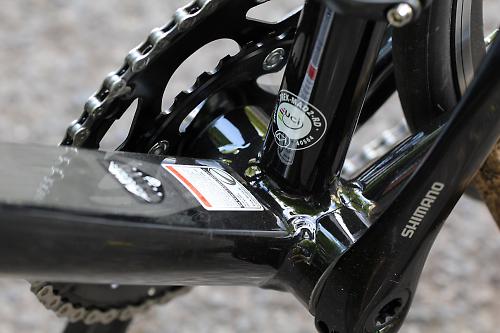
That isn't really surprising given that the bike is five grand cheaper and the frame is made of aluminium. The point is, though, that Trek use the Madone name to cover a range of bikes that are significantly different from one another. They're all sporty to some degree or another and they share some design cues, but they're sometimes distant cousins rather than siblings.
That's not to say that the 2.1 is deficient when it comes to high-quality features. The head tube, for instance, is tapered with a standard 1 1/8in bearing at the top and a 1 1/2in bearing at the bottom, that extra material in the frame and fork helping to provide a good level of front-end stiffness.

The bottom bracket is a BB86.5 design with the bearings pressed into the shell, removing the need for cups and threads and reducing weight, and also allowing the down tube to be made wider for increased stiffness, while the gear cables run internally. Well, mostly. The rear mech cable exits the frame underneath the bottom bracket and does the last leg out in the open.
Both the frame and carbon-legged fork feature mudguard mounts. They're going to be very useful for UK conditions and we can imagine lots of people using the 2.1 for commuting, among other things. The mounts sit just behind the dropouts and run forwards rather than sideways, so they're hardly noticeable when not in use. In fact, after several weeks of riding this bike, I had to head back to the garage to double check they were even there. They were, and there's another mudguard-fixing hole on the back of the seat tube.
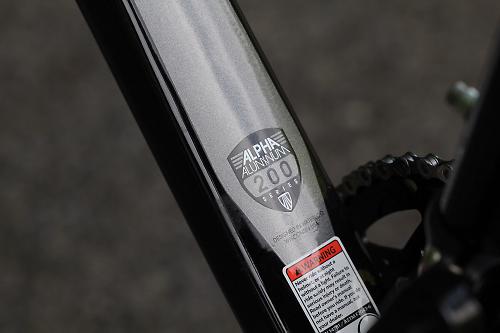
The carbon legged fork has that KVF shaping that I mentioned above and it's SpeedTrap compatible. That means you can fit a Trek computer sensor into a pocket in one of the legs. Okay, a lot of people use GPS systems these days, but it's a neat option if you don't want to rely on those pesky satellites.
In terms of geometry, the 2 Series Madones are built to Trek's H2 fit. What does that mean? Funny you should ask. It means that the head tube is slightly extended over Trek's low and aero H1 fit. It's still a sporty road bike arrangement, but not quite as aggressive.

So, our 58cm review bike has a 19cm head tube and an effective top tube of 57.4cm. For comparison, the 6 Series Madone that we reviewed a few months ago came in an H1 fit (it's available in H2 as well). That had a 16cm head tube and a 57.9cm effective top tube. The 2.1 has a 59.8cm stack and a 39.1cm reach, while the 6 Series has a 56.9cm stack and a 40.5cm reach.
If you don't want to decode those figures for yourself, the top and bottom of it is that you can get a ride position on the 2.1 that's a little more relaxed without the need to add a bunch of headset spacers. Go for a short head tube with a load of spacers and you'll compromise front-end stiffness. If you want a higher front end, you're better off having the height supplied by the head tube.

Some flexible folk might prefer a lower front end, especially for racing or just for riding as fast, while others are going to be happy with a higher front end for more comfort. It's up to you; Trek offer a whole load of bikes in each fit. And bear in mind that although the H2 is relaxed, it's not that relaxed. A 58cm Specialized Roubaix, for example, has a 22.5cm head tube.
Components: Dependable Shimano 105
Moving on to the build, the shifters and mechs are from Shimano's mid-level 105 groupset, which is the most common group that you'll find on £1,000 bikes. It's solid, reliable kit – durable and functional.

You can adjust the reach to the levers by adding shims, the hoods are very comfortable to rest your hands on, and the mechs will probably carry on working for ages with relatively little maintenance.
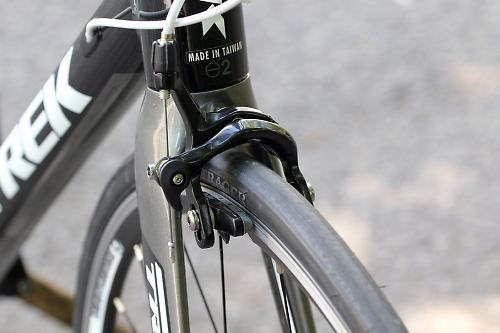
The chainset isn't 105, though, it's a Shimano R565 compact option, so you get 50-tooth and 34-tooth chainrings rather than a standard 53/39T or 52/39T. That means you get a lower set of ratios to get you up the hills at the expense of big gears for pinning it down the other side.
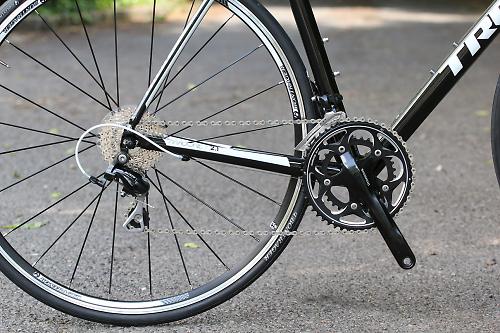
It makes a lot of sense for most people who will gladly take the rest if they run out of big gears and enjoy the view instead. The Shimano Tiagra cassette it's matched up to runs sprockets from 12-tooth right up to 30-tooth.
The ride: No alarms and no surprises
I'd love to tell you that the Madone behaved really unexpectedly out on the road. It makes for a better story if a bike does something you don't anticipate, either good or bad. But the truth is that this bike behaves exactly as it should without any real surprises.

At 9.1kg (20.06lb), the 2.1 is never going to be the fastest bike out of the blocks, and acceleration is probably its weakest feature. The wheels from in-house brand Bontrager are solid enough but they're not especially keen to start zipping along – you don't get that exciting feeling of super-fast acceleration – but that's all forgotten once you get up to speed.
In terms of comfort, that ride position I mentioned is all-important. I'm used to quite a sporty setup and I didn't feel this was a vast distance away from that. You don't sit so upright that you feel as if the wind is blowing you backwards – it's a long way off that. Put it this way: if a full-on race set up is described as aggressive, maybe this is a passive aggressive ride position. Just putting it out there.
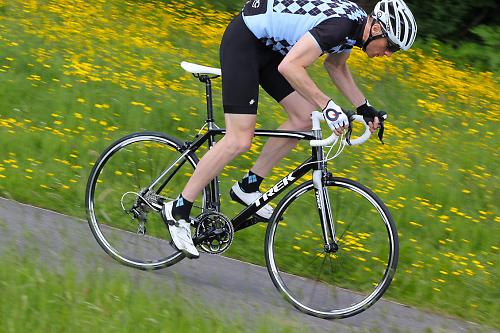
I can't say that I'm not a big fan of Bontrager's Affinity 1 saddle. It's a bit too spongy and mushy for my taste. Brands often do this with bikes up to about this price, probably on the basis that people walking into bike shops often equate soft with comfortable. They're wrong. It's not a disaster but I'd be ditching it early on if I bought this bike.
The gel bar tape softens the alloy front end so your hands and wrists feel fine throughout long rides and, as I said earlier, the hoods on the 105 levers provide another comfy hold. If you're like most people, you'll spend most of your time with your hands up here and when you do want to move to the drops, it's a comparatively short distance down there – just 125mm – which makes things easier on your back and neck. Passive aggressive, as I said before.

Whack the chain into the small chainring and the biggest sprocket and you have a really low gear (29.8in, if you're interested in such things) that'll get you up pretty much anything that doesn't need rope ladders and overhanging rocks. You won't get up the hills especially fast in a gear this small, but you'll be able to keep chugging along even when you have a day's riding behind you and your muscles have waved a little white flag.
Coming down the hills, the 2.1 feels planted rather than skittish, even over dodgy surfaces, and the front end doesn't waver when you chuck it hard into a bend. The no-name dual-pivot brakes might not have the cred of branded up options but in practice, they perform well enough and will do even better if you upgrade the pads when the first set wear out.
Conclusion: Gets the job done
Overall, the 2.1 is a well-designed, well-executed bike that gets on with the job with very little fuss. It's not carbon, it's not mega-light, and if you were being harsh you might say that it's not the most exciting choice out there at this price, but it is solid, reliable and dependable and good value for money – and there's a lot to be said for that.
Verdict
Solid, good value road bike that'll see you right for everything from commuting to all-day sportives.
road.cc test report
Make and model: Trek Madone 2.1
Size tested: 58cm
About the bike
State the frame and fork material and method of construction. List the components used to build up the bike.
Frame 200 Series Alpha Aluminium, E2, KVF (Kammtail Virtual Foil) tube shape, press-fit BB
Fork Madone KVF carbon, E2, SpeedTrap compatible
Wheels Aluminium hubs w/Bontrager Approved aluminium rims
Tyres Bontrager R1, 700x23c
Shifters Shimano 105 STI, 10 speed
Front derailleur Shimano 105, 34.9mm clamp
Rear derailleur Shimano 105
Crank Shimano R565, 50/34 (compact)
Cassette Shimano Tiagra 12-30, 10 speed
Saddle Bontrager Affinity 1, steel rails
Seatpost Bontrager Race, infinite tilt adjustment, 20mm offset
Handlebar Bontrager Race VR-C, 31.8mm
Stem Bontrager Race Lite, 31.8mm, 7 degree
Headset Integrated, cartridge bearings, sealed, aluminium, 1-1/8in top, 1.5in bottom
Brakeset Aluminium dual-pivot brakes w/Shimano 105 STI levers
Tape Bontrager Gel Cork
Tell us what the bike is for, and who it's aimed at. What do the manufacturers say about it? How does that compare to your own feelings about the bike?
Trek say, "Finally, an aluminium road bike worthy of the Madone name, with a super-aero shape and next-level race technology. Incredible ride, incredible value."
The Madone 2.1 doesn't have much in common with the top-end Madones – so little that you can't really see that having the name cover them all is much more than a marketing exercise to extend some of that top-end cred. Whatever they call it, this is a very good do-it-all road bike for the money.
Frame and fork
Overall rating for frame and fork
7/10
Tell us about the materials used in the frame and fork?
The frame is 200 Series Alpha Aluminium. The fork is carbon legs/alloy steerer.
Tell us about the geometry of the frame and fork?
It's built to Trek's H2 fit. See the main text for all the details.
Riding the bike
Was there any toe-clip overlap with the front wheel? If so, was it a problem?
A tiny amount on the 58cm frame. Not a worry.
Rate the bike for efficiency of power transfer:
7/10
Rate the bike for acceleration:
6/10
Rate the bike for sprinting:
7/10
Rate the bike for high speed stability:
7/10
Rate the bike for cruising speed stability:
7/10
Rate the bike for low speed stability:
7/10
Rate the bike for flat cornering:
7/10
Rate the bike for cornering on descents:
8/10
Rate the bike for climbing:
6/10
The drivetrain
Rate the drivetrain for performance:
8/10
Rate the drivetrain for durability:
8/10
Rate the drivetrain for weight:
8/10
Rate the drivetrain for value:
8/10
Wheels and tyres
Rate the wheels and tyres for performance:
7/10
Rate the wheels and tyres for durability:
7/10
Rate the wheels and tyres for weight:
6/10
Rate the wheels and tyres for comfort:
7/10
Rate the wheels and tyres for value:
7/10
Controls
Rate the controls for performance:
8/10
Rate the controls for durability:
8/10
Rate the controls for weight:
8/10
Rate the controls for comfort:
8/10
Rate the controls for value:
8/10
Your summary
Did you enjoy riding the bike? Yes.
Would you consider buying the bike? Perhaps bit of a 'safe' choice, but solid reliability has a lot going for it.
Would you recommend the bike to a friend? Yes.
Rate the bike overall for performance:
8/10
Rate the bike overall for value:
8/10
About the tester
Age: 41 Height: 190cm Weight: 75kg
I usually ride: My best bike is:
I've been riding for: Over 20 years I ride: Most days I would class myself as: Expert
I regularly do the following types of riding: time trialling, commuting, club rides, sportives, general fitness riding,
Mat has been in cycling media since 1996, on titles including BikeRadar, Total Bike, Total Mountain Bike, What Mountain Bike and Mountain Biking UK, and he has been editor of 220 Triathlon and Cycling Plus. Mat has been road.cc technical editor for over a decade, testing bikes, fettling the latest kit, and trying out the most up-to-the-minute clothing. He has won his category in Ironman UK 70.3 and finished on the podium in both marathons he has run. Mat is a Cambridge graduate who did a post-grad in magazine journalism, and he is a winner of the Cycling Media Award for Specialist Online Writer. Now over 50, he's riding road and gravel bikes most days for fun and fitness rather than training for competitions.
Latest Comments
- Simon E 3 sec ago
A generation (or more) of cycling fans owe a huge amount to Gary Imlach and the C4 / ITV teams for their cycling coverage on TV, especially Gary's...
- Cycloid 26 min 33 sec ago
The Jacket looks cool in the photo, but........
- matthewn5 1 hour 10 min ago
A club member had just had his 12 speed Shimano Hollowtech cranks fail... same way that the 11 speed cranks failed.
- MattieKempy 1 hour 25 min ago
Currently watching the Cyclocross Worlds on www.Sporza.be using my vpn, which I have anyway, free through my bank account. OK, so it's in Dutch,...
- chrisonabike 1 hour 55 min ago
EDIT - Cycle Happy got there first!...
- rickiecheese 2 hours 56 min ago
An update regarding this path....
- tony.westclassics@live.co.uk 3 hours 57 min ago
Theres no boubt about it, this bloke is the kiss of death
- don simon fbpe 4 hours 11 min ago
As you agree with me, I don't understand your point.
- Rendel Harris 4 hours 15 min ago
Absolutely without a doubt, a small example recently: I was cycling down The Mall in London from Buckingham Palace towards Admiralty Arch and...
- cardch 5 hours 54 min ago
Just ordered mine. Went to visit them and it's a great setup, and so nice (I hope) to get something with a bit of soul, rather than another...


































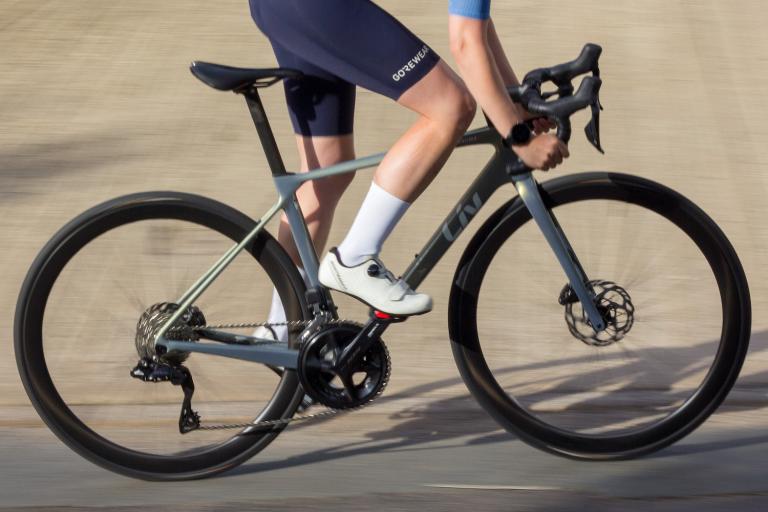
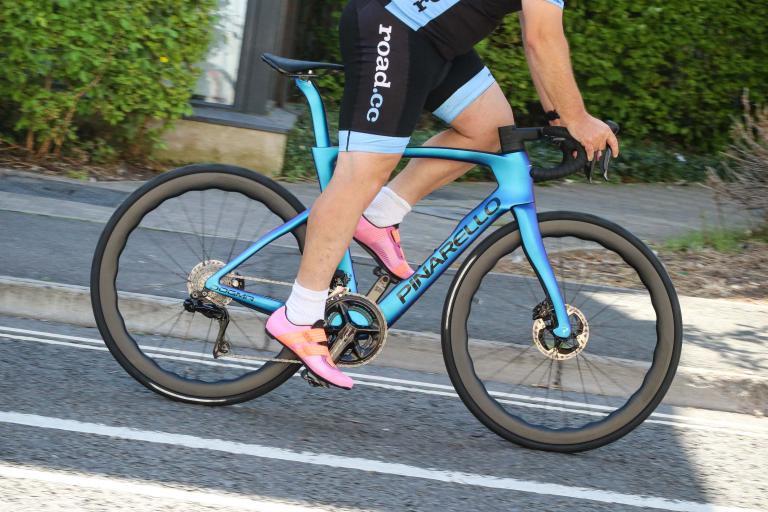
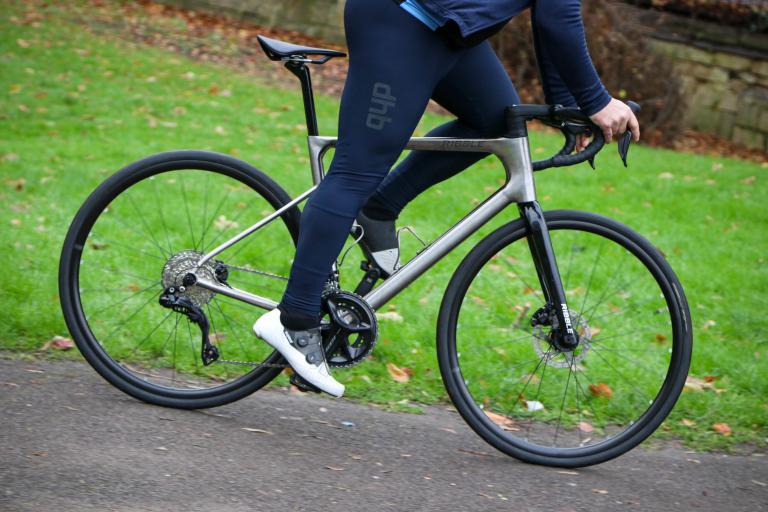
Add new comment
10 comments
The road bike that got me back into road bikes after riding mtb for 30 yrs, great bike
Are you kidding. BB30 is the worst possible standard in Bottom Brackets.
Shimano's standard still seems to be the best, very much so.
It's a shame that your twitting @ sign thing looks like it says "Trek bikes suk" at first glance.
I wish Trek would adopt a BB30 so Shimano would start making BB30 cranksets
Been in a muddle about a cycle scheme bike recently. Looked at this, the same(near) priced, giant, scott & specialized. The scott s20 had full 105, the rest was a tiagra/tekro(?) or summat mishmash.
-planet x and ribble offered best value for money - mainly carbon with a full groupset.
It depends what you want.
Don't understand why this gets 4 stars, when last year's Bike of the Year only got 4.5? Are you saying this is nearly Bike of the Year material? Really?
Rough welding round the bottom bracket too.
Floor Filler.
Hello!
Just for clarification, the Domane is a high-performance bike, as well as the Madone. Yes, the emphasis of the Domane is that of comfort over a longer distance, but it's just as much a bike for people who want to go fast.
The difference between the two will ultimately come down to what type of ride someone wants to experience. If you want to feel that you are well-connected to the road, then you want a Madone. If you want to reduce the 'white noise' that comes with riding a typical UK road surface, then opt for a Domane.
Both performance bikes. Both with oodles of technology. Both with unique ride qualities.
A comfort bike should have at least 25c tires.
I hate it when companies cheap out on things like cassettes by down speccing them hoping buyers won't notice.
Is it the 2.1 or the 2.3? Just curious.
Can't help but think that for a 'comfort road' bike you might as well buy the Domane though.